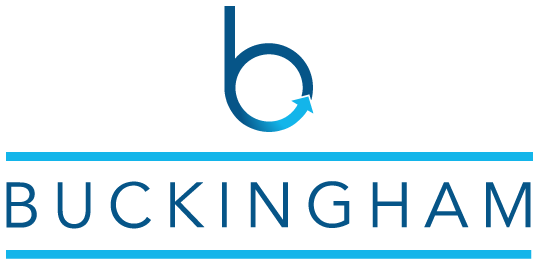Read the full article
Vendors beware: Don’t ignore new sales tax collection obligations
States can impose personal liability for non-collection of sales tax
 The U.S. Supreme Court’s groundbreaking decision in South Dakota v. Wayfair overturned 50 years of precedent and changed the e-commerce landscape. The court found that vendors can be required to collect sales tax even without an in-state physical presence. Following this decision, states across the country have begun enacting “economic nexus” provisions requiring sales tax collection based upon a very modest amount of sales into their state. But since the Court did not precisely define the standards or safeguards necessary for sales tax collection, vendors face critical decisions to ensure compliance with their multistate tax obligations.
The U.S. Supreme Court’s groundbreaking decision in South Dakota v. Wayfair overturned 50 years of precedent and changed the e-commerce landscape. The court found that vendors can be required to collect sales tax even without an in-state physical presence. Following this decision, states across the country have begun enacting “economic nexus” provisions requiring sales tax collection based upon a very modest amount of sales into their state. But since the Court did not precisely define the standards or safeguards necessary for sales tax collection, vendors face critical decisions to ensure compliance with their multistate tax obligations.
Why should you care? Not only are there compliance costs, but states can often impose personal liability for non-collection of sales taxes (which is even non-dischargeable in bankruptcy).
South Dakota challenged the 50-year-old bright-line physical presence standard by imposing economic nexus requiring sellers to collect tax if they delivered more than $100,000 of sales or 200 separate transactions into the state — very modest thresholds in today’s e-commerce environment. The Court overruled the physical presence rule finding it impeded the state’s ability to collect tax and was unworkable in our digitized economy. Certain safeguards were critical, however, for South Dakota to force remote vendors to collect tax, including simplified collection through implementation of the Streamlined Sales and Use Tax Agreement (“Streamline”).
To avoid unduly burdening interstate commerce, four specific aspects of South Dakota’s tax scheme, implemented as a Streamline member, were stressed:
- A single state level tax administrator
- A simplified tax rate structure
- Uniform tax rules
- Access to sales tax administration software paid for by the state
All Streamline members have similar sales tax collection laws. But it is unclear whether states may impose economic nexus requirements without such protections in place.
Both Streamline and non-Streamline states have enacted economic nexus laws with varying effective dates. Most mirror South Dakota’s standard – $100,000 in sales or 200 transactions delivered into the state in the current or previous calendar year. Some states made their laws effective July 1, 2018, which is arguably unreasonable, while most will require sales tax collection beginning Oct. 1, 2018, or Jan. 1, 2019.
Nonetheless, some of the largest states — California and New York — are among those that have not responded to the Wayfair decision yet. Meanwhile, Texas recently proposed an economic nexus rule that will not be enforced until October 2019. Vendors should expect that all states will jump on the economic nexus bandwagon sometime in 2019.
As states roll out economic nexus legislation, vendors will have increased compliance risk in collecting and remitting sales taxes in every state where they exceed the modest sales threshold. The administrative costs and burdens to comply can be significant, especially for smaller sellers. Updating their software systems to calculate sales tax and document exemptions in the additional states can be an expensive endeavor. Streamline states make software available through Certified Service Providers to alleviate the administrative cost. Further, Streamline states use consistent definitions of taxable sales and sourcing, again easing the compliance burden for remote sellers.
Non-Streamline states can present more of a compliance challenge. We expect many of these states will implement simplification measures to ensure their law does not unduly burden remote sellers. However, in the meantime, remote sellers will likely challenge the obligation to collect tax, especially in those states with burdensome local tax collection schemes (e.g., Colorado and Louisiana).
Since Congress has the authority to regulate interstate commerce, it should enact legislation specifically setting forth safeguards necessary for states to require sales tax collection, consistent with those the Court highlighted in South Dakota’s law. In fact, U.S. House of Representative Bob Gibbs from Ohio introduced the Protecting Businesses from Burdensome Compliance Cost Act of 2018 (H.R. 6724). However, it appears unlikely there is much momentum for Congress to provide remote sellers with such legislative protections.
Post-Wayfair compliance will be especially complex for multistate service providers, such as the many businesses providing cloud-based services. The first challenge is determining where the provider’s services are taxable. Viewed as a significant revenue generator, states have increasingly added to their list of taxable services with significantly different definitions and application of what constitutes a taxable service.
Many states impose sales tax on Software as a Service (SaaS) or web-based application software. For example, Texas taxes SaaS, such as customer relationship management and enterprise resource planning services, which are classified as taxable data processing. New Jersey taxes “information services,” which includes database-type services where the customer accesses software online to obtain information from the service provider. Likewise, electronic information services are taxable in Ohio, which the Tax Commissioner asserts includes nearly all cloud-based services since the customer is provided with access to computer equipment via the Internet to examine, acquire or store data. Accordingly, all cloud-based service providers are required to collect Ohio sales/use tax if satisfying Ohio’s nexus standard based upon the use of cookies or content distribution networks in the state.
Further, lack of uniformity will also require service providers to determine where its services are taxable. For instance, SaaS providers often provide licenses to a customer’s employees located across many states. Since the customer uses the service in different states, different rules and tax rates would apply.
Determining taxability and sourcing for service providers presents substantial challenges under economic nexus standards. Service providers must carefully analyze each state’s guidelines to determine whether and where their services may be taxable — a significant task, especially considering some economic standards are already effective or will be starting Oct. 1.



